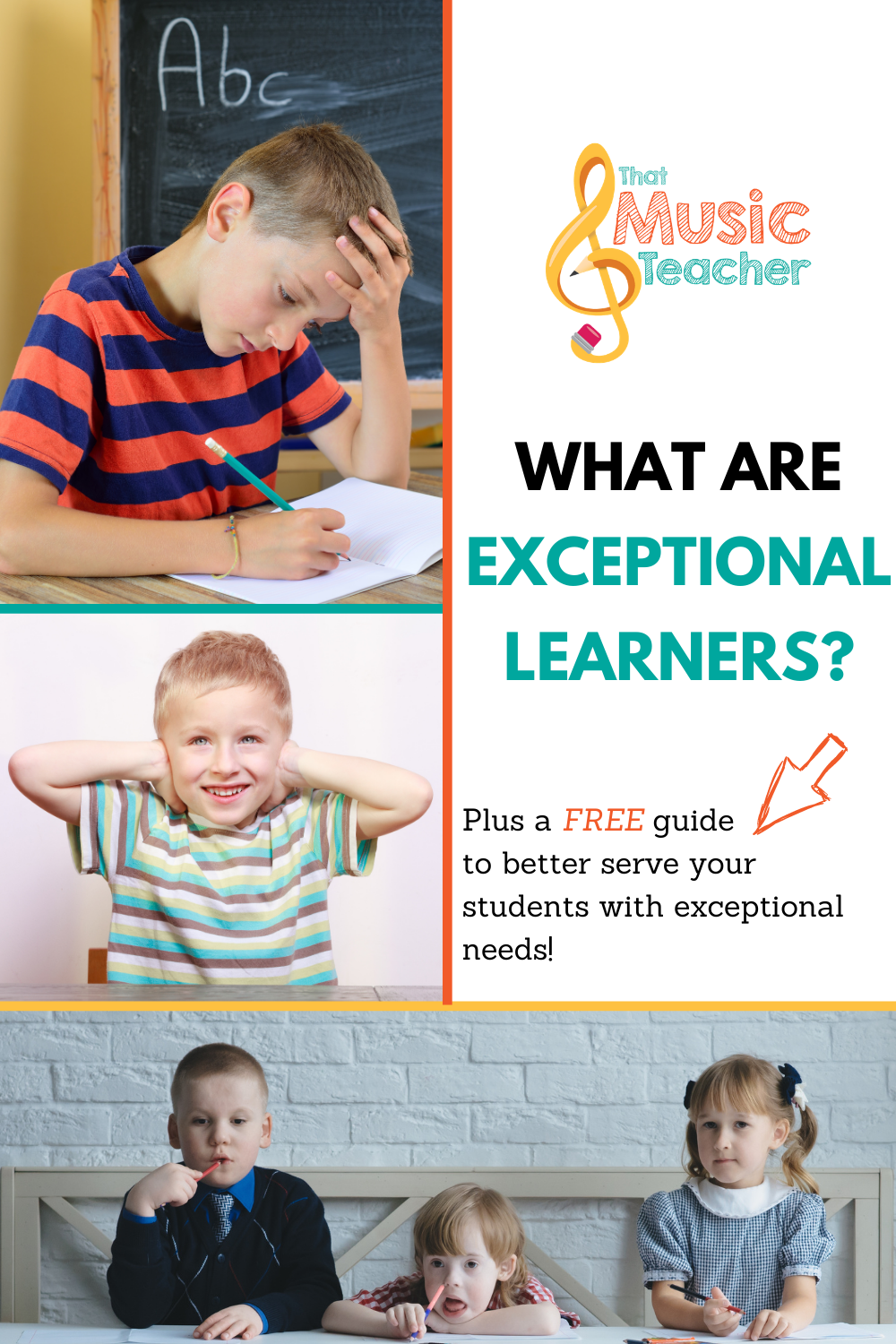
What Are Exceptional Learners?
Dec 01, 2020If you’ve followed That Music Teacher for a while now, you’ve likely heard the term “Exceptional Learners.” My school refers to this population as “Students with Learning Differences.” There are many names for these amazing students throughout the world of education, but what does any of it actually mean?
Whatever term you’ve heard during your time as a teacher, it all boils down to how we can help neurodiverse students. This includes students on the autism spectrum, students with learning disabilities, reading challenges, sensory issues, and many others. Let’s talk about how some of these exceptional needs might showcase themselves in the music classroom.
Autism Spectrum (ASD)
As you likely know, children on the autism spectrum will show it differently. It does not manifest itself the same in every child. For some students, you may see it when students have trouble reading social cues. With others, it comes out through sensory overwhelm.
The best way to serve these students is to read their IEP, communicate with their other teachers, and really learn how each individual student operates. One solution that is great for students with ASD, and even students without exceptional needs, is to try to incorporate a visual schedule into your routine. This allows you to keep yourself on track while also giving your students a visual cue for what to expect.
Sensory or Audio Issues
Students with sensory or auditory processing disorders can often have a tough time in music class, especially on days where everyone is making music in their own way.
At my school, I have several young students who struggle with sensory overwhelm, which I didn’t realize until our first day of recorder. I felt so bad! Long story short, there were lots of tears and the covering of ears. The solution for my students was to provide them with noise-cancelling headphones. They didn’t block out all noise, but dampened it enough for them to be able to stay in class and participate.
With auditory processing disorders, students have a hard time knowing what sound to focus on. If someone nearby is fidgeting with something while the teacher is talking, the student’s brain has trouble filtering which sound is more important, even if the student knows exactly who they should be focused on!
If you’re able, I recommend investing in a microphone or FM system. This has worked wonders for my students! (And it also saves your voice because you don’t have to project as much. Win win!)
Reading Disorders (ex. Dyslexia)
Unfortunately, there’s not a lot of research out there right now about how dyslexia affects students’ abilities to read music. What we do know, though, is that dyslexia affects students in different ways.
For example, my husband has dyslexia and he had minimal trouble reading music when he learned saxophone. Some of my students, however, have an incredibly difficult time figuring out how to interpret what’s on the page in front of them. Just like what we talked about earlier with ASD, you’ll need to figure out what works for each student. (Differentiation, am I right?)
One myth that I want to dispel really quickly is this: Colored overlays do not cure dyslexia. Colored overlays are designed to help with visual overwhelm, so they help for students who have visual disorders. However, dyslexia is a neurological disorder, meaning they need specific structures for learning in order to be successful.
Students with dyslexia, especially younger students, also tend to have trouble with left/right differentiation and struggle with spatial awareness. Having cues somewhere easily accessible to let them know which direction is which, and lots of practice with reading/writing is going to help these students so much! (And hopefully more research will come out soon to help us even further!)
Hopefully this has given you a foundation for how to help the Exceptional Learners in your classroom! This is by no means an exhaustive list of every type of learner you’ll see in your classroom.
Be sure to get your free copy of “5 Ways to Better Serve Students with Exceptional Needs”
What are some questions you have about Exceptional Learners? Let us know in the comments!
This article was submitted by Rachel Ammons, contributing author for ThatMusicTeacher.com. Interested in becoming a contributing author? Email resume and writing sample to [email protected]

Don't miss a beat!
New moves, motivation, and classes delivered to your inbox.
We hate SPAM. We will never sell your information, for any reason.

